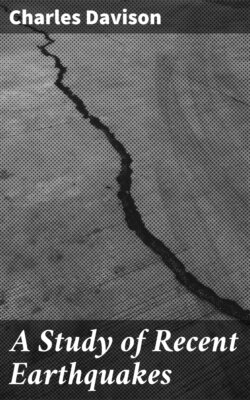Читать книгу A Study of Recent Earthquakes - Charles Davison - Страница 39
На сайте Литреса книга снята с продажи.
POSITION OF THE EPICENTRE.
ОглавлениеOwing to the limited size of the disturbed area, time-observations, even had they been available, would not have sufficed to determine the position of the epicentre, and both Dr. Johnston-Lavis and Professor Mercalli therefore had recourse to Mallet's method, the former relying chiefly, as before, on fissures in damaged buildings, and the latter on the overthrow or displacement of columns and other objects.
Dr. Johnston-Lavis measured the azimuth of the wave-paths at sixty-five places, and at about one-third of these was able to make two or more observations. The azimuths converge towards the same region as in 1881, but the area covered by their intersections is larger. The meizoseismal band of maximum vertical destruction indicated by shading in Fig. 16 is also of the same form and slightly greater extent, reaching from the upper part of Lacco to a little south of Frasso, and being therefore nearly a mile in length. The centre of maximum impulse was in the same position as in 1881, or possibly a little more to the south.
Professor Mercalli's observations were made at forty-eight places, and in only six cases were they the same as those used by his predecessor. He also notices that most of the azimuths converge towards Casamenella, and intersect within an elongated area. This area runs in the same direction as Dr. Johnston-Lavis's meizoseismal band, but is less elongated, and situated a short distance farther to the south, though on the whole the agreement between the two areas is remarkably close.
There was again apparently a second epicentre at Fontana. In this town, according to Dr. Johnston-Lavis, there were two distinct types of damage. As in 1881, there was evidence of a vertical blow, the only one that absolutely ruined houses; but, in addition, there was another independent set of fissures, quite as widely distributed as the others, though evidently caused by a less violent movement. These indicated a wave-path with a low angle of emergence coming from between north and north-north-west, or almost exactly in the line of meizoseismal band. To the south of Fontana, however, there is a group of places, including Panza, Serrara, Barano, etc., where the azimuths diverged rather widely from the epicentre at Casamenella. These azimuths are twelve in number, and it is worthy of notice that they all intersected the crater of Epomeo, while half of them passed within a few hundred yards of Fontana.
